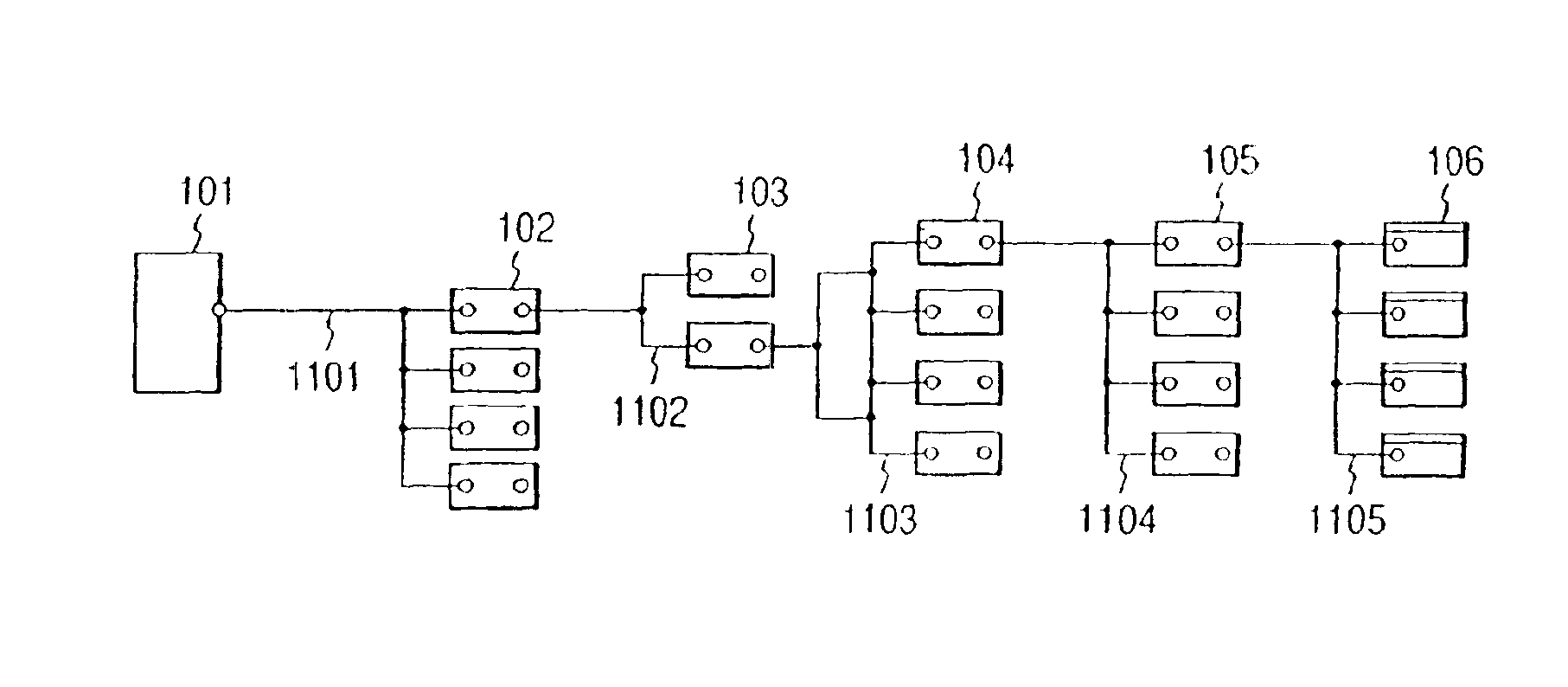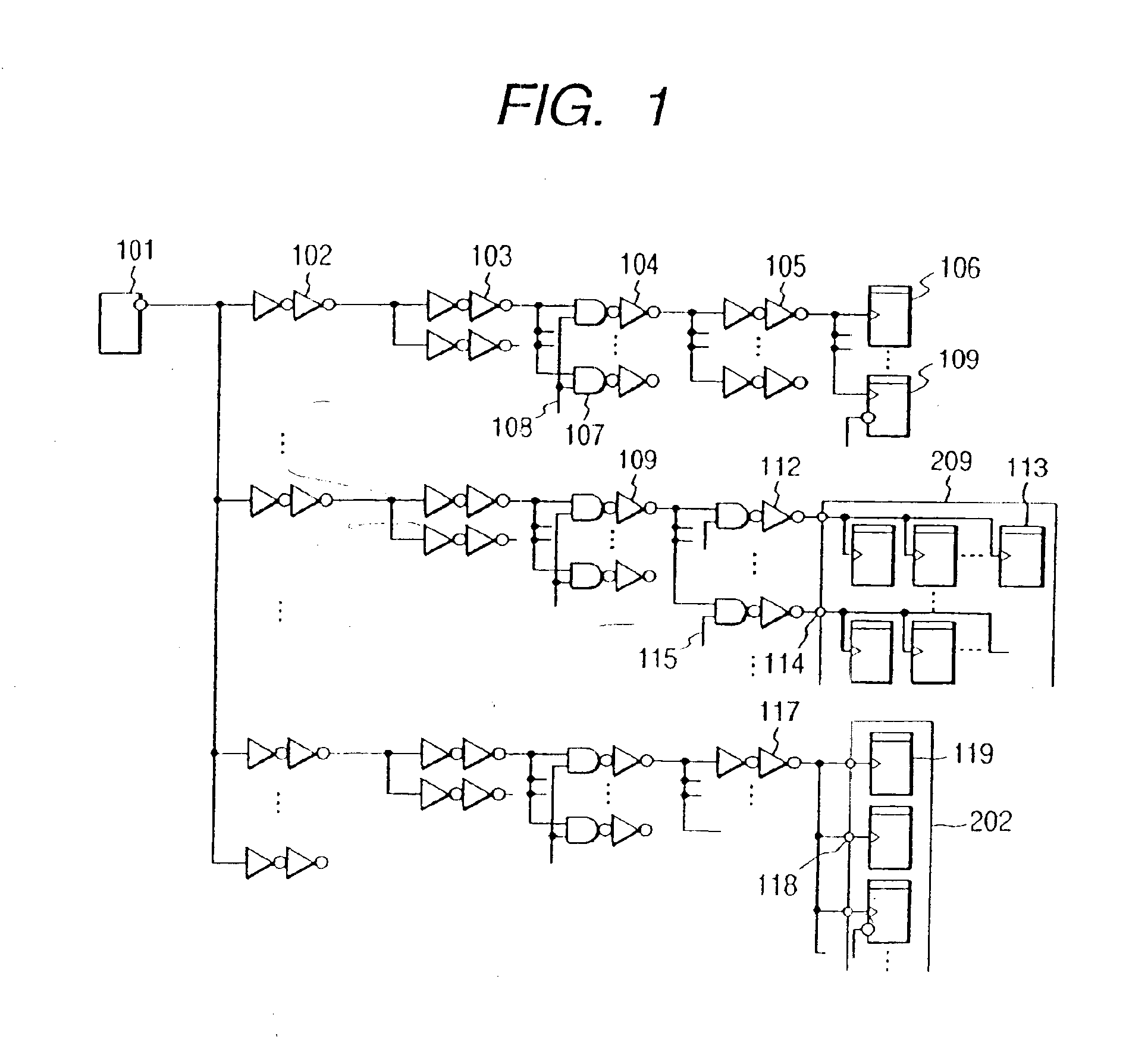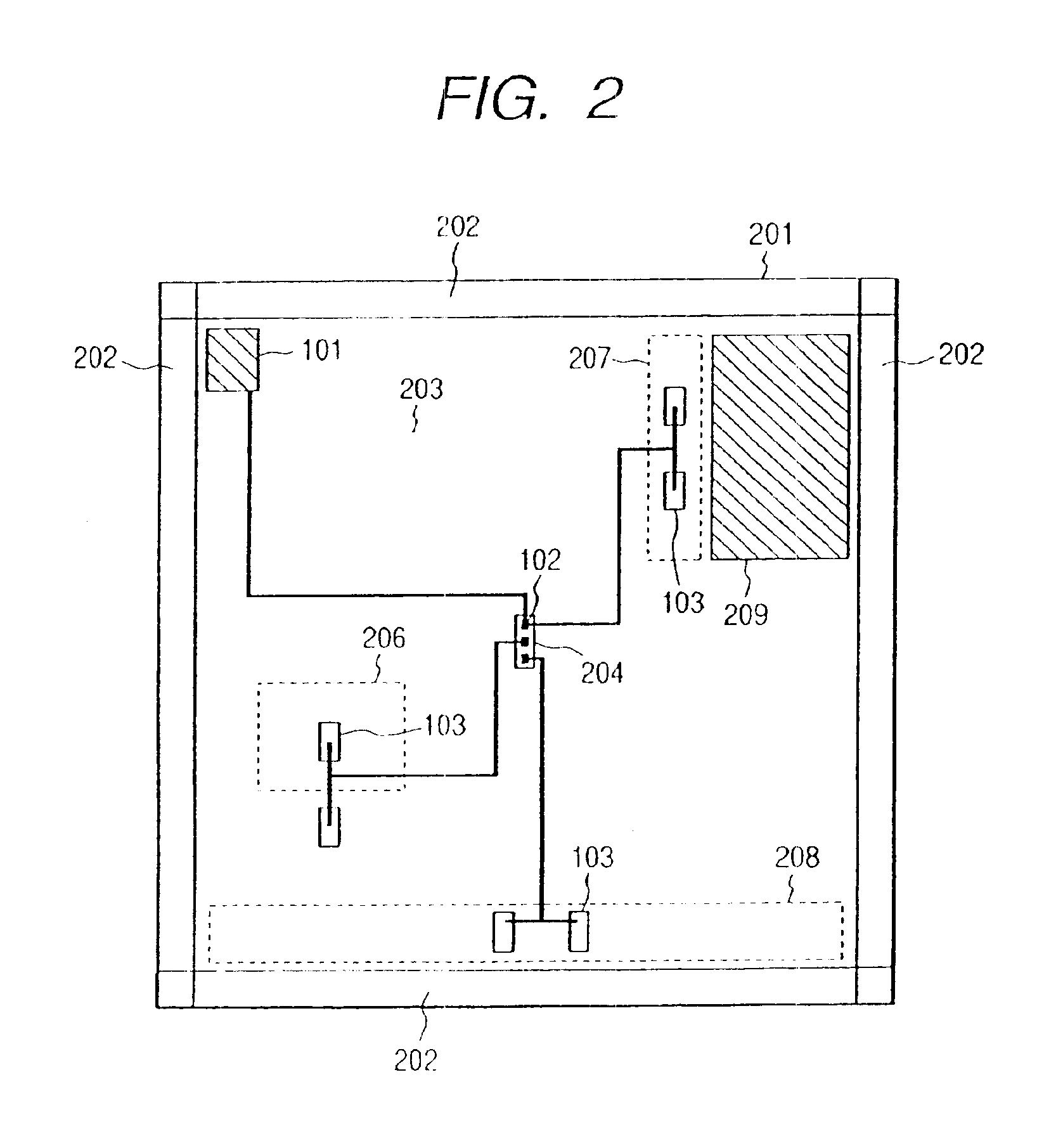Semiconductor integrated circuit device
a technology of integrated circuit and semiconductor, applied in the direction of generating/distributing signals, pulse techniques, instruments, etc., can solve the problems of more delay of clock signals, affecting the efficiency of vlsis, and unable to consider the optimal arrangement of skew reduction for vlsis, so as to minimize clock skew
- Summary
- Abstract
- Description
- Claims
- Application Information
AI Technical Summary
Benefits of technology
Problems solved by technology
Method used
Image
Examples
Embodiment Construction
FIG. 1 is a schematic diagram showing clock logic circuits applicable to a semiconductor integrated circuit device embodying the invention. This embodiment comprises four stages of clock drivers through which a clock signal generator 101 supplies clock signals to all flip-flops 106 inside the chip. The flip-flops are located in random logic circuits, data paths, and input / output pads.
The clock drivers at each stage play the roles described below. Clock drivers 102, situated at the first stage as viewed from the clock signal generator, are called root clock drivers. These drivers distribute throughout the entire chip the clock signals output by the clock signal generator.
Second stage clock drivers 103 distribute clock signals to third stage clock drivers 104. The drivers 104 are located in regions each made up of a number of logic blocks in the chip.
The third stage clock drivers 104 and fourth stage clock drivers 105 serve to distribute clock signals to all flip-flops in the logic bl...
PUM
 Login to View More
Login to View More Abstract
Description
Claims
Application Information
 Login to View More
Login to View More - R&D
- Intellectual Property
- Life Sciences
- Materials
- Tech Scout
- Unparalleled Data Quality
- Higher Quality Content
- 60% Fewer Hallucinations
Browse by: Latest US Patents, China's latest patents, Technical Efficacy Thesaurus, Application Domain, Technology Topic, Popular Technical Reports.
© 2025 PatSnap. All rights reserved.Legal|Privacy policy|Modern Slavery Act Transparency Statement|Sitemap|About US| Contact US: help@patsnap.com



